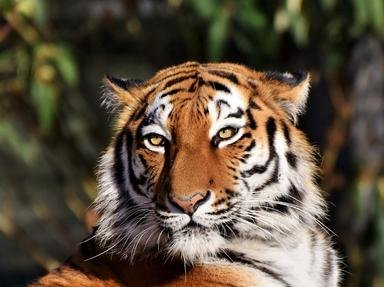Quiz Answer Key and Fun Facts
1. The Iriomote cat is so named because it lives on only one tiny little island; Iriomote island.
Which island nation claims Iriomote, home of the Iriomote cat?
2. Locals know the Iriomote cat by many names in the native language, including one that is palindromatic. Which of these names means "the cat in the mountain" in Japanese?
3. In 2007, there were between 100 and 109 Iriomote cats left in existence. With this small number, in 2008, they were given a conservation status. Which would be the appropriate status given based on the above stats?
4. When comparing the skull of an Iriomote cat to that of the leopard cat, it is very much the same, except for one thing. What is different about the Iriomote cat's skull?
5. The Iriomote cat is the most active during the twilight hours. What word would describe this behavior the best?
6. Like most carnivores, the Iriomote cat must compete with other carnivores for its food. Which of these is its biggest competition?
7. Most wild cats, if they catch a bird that is too large, will do something to the bird before eating it. The Iriomote, however, does not. What method is usually used by cats, except the Iriomote cat?
8. Almost every wild cat will snap the spinal column to kill their prey. The Iriomote cat, though, does no such thing. What method does this cat use for its prey?
9. On Iriomote Island, special signs featuring the Iriomote cat appear on the side of the road. What kind of sign?
10. Peculiar; some claim the Iriomote cat not to be the only feline to inhabit the island. Some have claimed to spot a wild cat about twice the size of the Iriomote, but still use one of the Iriomote's names to describe it. Which name is often used to describe this cryptic cat?
Source: Author
salami_swami
This quiz was reviewed by FunTrivia editor
Tizzabelle before going online.
Any errors found in FunTrivia content are routinely corrected through our feedback system.


